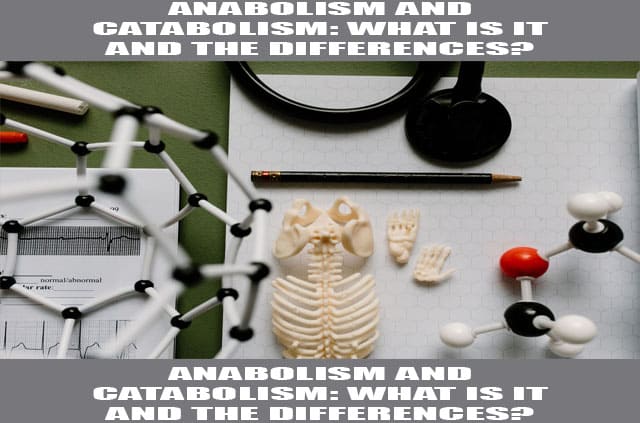Anabolism and Catabolism: What is it and the differences?

What is metabolism?
Basically, metabolism refers to the complex interrelated network of chemical processes by which living organisms develop and maintain themselves, as well as their growth and death. This complex metabolic network is made up of two forms: catabolism and anabolism. Basically, catabolism is the breakdown of (biochemical) materials in a matter of minutes. Anabolism, on the other hand, is the synthesis of materials (metabolites) to create new materials (amines).
What is catabolism?
This metabolic process is where large molecules are broken down into smaller ones. Basically, catabolism is necessary for the human body, since the large molecules created for the synthesis of these small-sized molecules (catabolic fibers) are produced only under metabolic stress. In such a condition, catabolic enzymes and other enzymes break down muscle tissue. In essence, catabolic fibers are broken down to fuel the body's growth process.
Catabolic reactions occur when a molecule is broken down into smaller molecules, thus triggering a catabolic reaction. Catabolic reactions take place when a muscle has been stressed so that the muscle fibers cannot grow any further. The breakdown of these muscle fibers produces byproducts such as amino acids and glycosylated glycogen, which are then stored in muscle tissue. This later buildup can increase over time and allow the muscles to develop to their full potential.
functions of catabolism
- Decompose organic food.
- Extract chemical energy from broken down food to be used by the body.
- It nourishes the body using tissues when there is insufficient food.
What is anabolism?
The process of causing the transformation of one substance into a simpler one, which is also known as catabolism. The reason for this transformation is to save energy. It is important to realize that catabolism does not occur in living organisms, but only in living tissues such as bacteria and yeast. The process is also commonly called catabolism. Protein is the most common source of catabolism.
The main role of anaerobic metabolism lies in the conversion of food into carbon dioxide and water. The absence of oxygen in the surroundings decreases the rate of enzymatic reactions and thus inhibits catabolic (degradation) and anabolic (synthesis) reactions. Also, a reduction in the efficiency with which enzymes digest food decreases the amount of energy that can be released from food as biological energy. This is one of the main reasons why athletes are less efficient at producing energy than leaner people.
functions of anabolism
- Increases muscle mass.
- Form the cellular components and tissues of growth.
- Store energy.
Difference Between Catabolism and Anabolism
The main difference between catabolism and anabolism lies in the fact that the former involves the division of molecules into simpler ones and the production of energy. While the latter involves the breakdown of molecules to create the electron energy needed by a living cell. Another essential difference lies in the fact that anabolisms drive the evolution of metabolic pathways through a series of chemical reactions so that catabolism triggers anabolism.
Anabolism is the only step in metabolic processing that removes non-essential amino acids from the body. Catabolism, on the other hand, is the opposite of anabolism. It adds new compounds to the body that require an essential amino acid, breaking down proteins in the process. The main difference between catabolism and anabolism lies in the rate of energy production and the end result of the metabolic process.
Catabolism is the sum of all the chemical processes in living cells that cause the generation of energy. Anabolism, on the other hand, is the opposite of catabolism. Catabolism refers to the breakdown of a compound into simpler compounds. Catabolism is the method by which anabolism drives the evolution of metabolic pathways through a series of chemical reactions. In essence, catabolism governs the entire metabolic process in living cells. Catabolism and anabolism have a profound effect on all aspects of biology, including cancer, where their different effects are known to cause serious problems.
